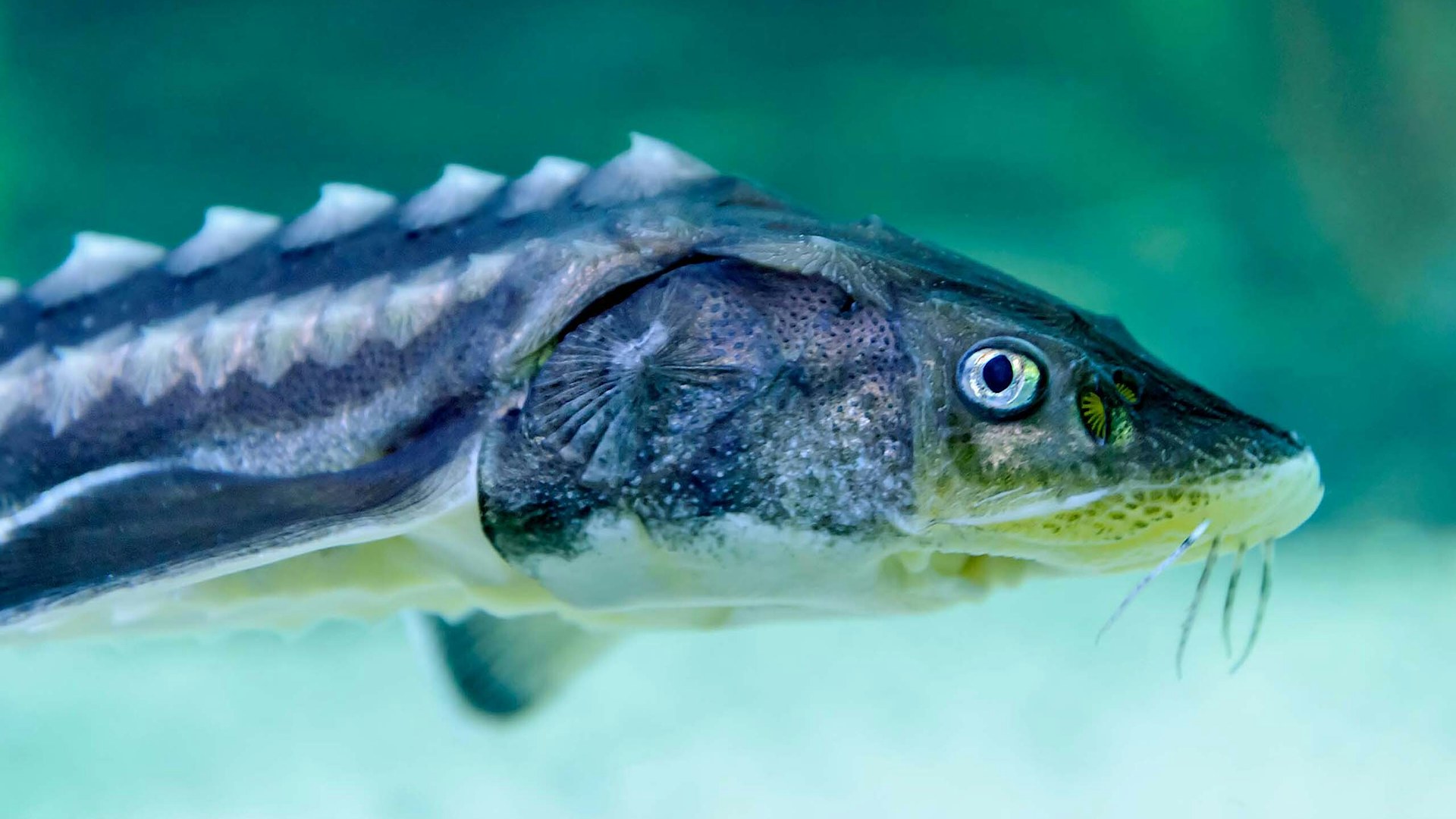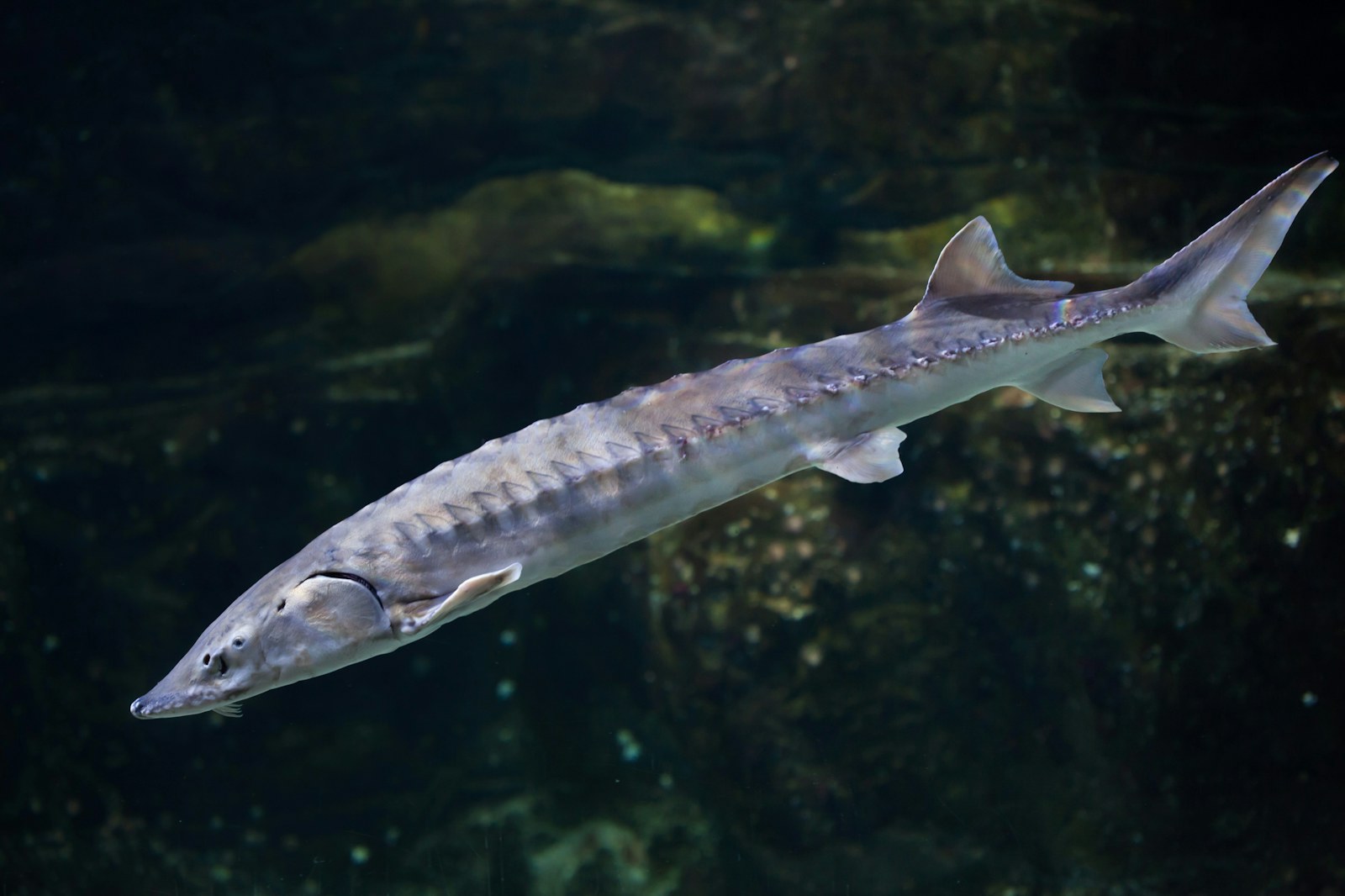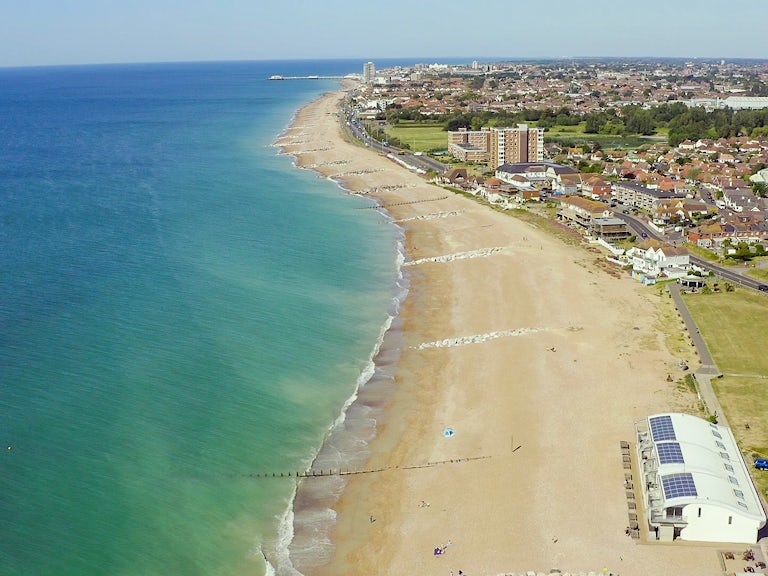Sturgeon
Acipenser sturio
A fish that evolved with the dinosaurs, this species is now extinct in Britain and critically endangered in Europe.

How it shapes the landscape
European sturgeon were once a key part of Britain’s river ecosystem and physically affected their surroundings, using their narrow, tapered heads to root around for worms, molluscs and crustaceans. This naturally disturbs the riverbed, moving organic matter along the waterways. They are migratory fish and can travel great distances, so play a key role in keeping their aquatic habitats dynamic.
Where it likes to be
The European sturgeon was once found sedately swimming throughout much of the coastal and inland waters of Europe. These great, serpentine fish can move from salt to freshwater on their way to and from their spawning grounds (known as being anadromous). Sturgeon spawn and spend their juvenile years in freshwater rivers. When they reach maturity after a few years, they migrate out to sea, returning to rivers later in life to spawn.
How much space they need
Sturgeon must have migratory routes with enough space for their big bodies, which means that rivers should be free-flowing from source to sea, with enough quality habitat and food. Restoring the sturgeon would involve connecting up, detoxifying and un-damming our waterways, an action that would also indirectly benefit a huge number of smaller, struggling migratory fish species, such as European eel and salmon.
Background story
Today’s sturgeon are classed as “primitive fish” because they look mostly the same as they did millions of years ago. They are river giants: though the average size of a sturgeon is around 1.25m, they have been recorded reaching 6m in length. However, their size belies their gentle nature, as they have no teeth and are slow-moving bottom feeders. As a family, sturgeon species are the most endangered on Earth, due to relentless hunting for their caviar and the blocking of their migratory routes by dams and weirs. Sturgeon were once common in Britain, seen on a regular basis in Severn Estuary as recently as the 1950s, but they are now locally extinct.
Their presence here has left quite the legacy as they are, like swans, protected by the Crown through a statute since the 14th century. The last known sighting of sturgeon in Britain was on the River Twyi in South Wales in 1993. As well as overfishing and blockading of their migratory routes, they’ve also fallen victim to the climate crisis, as they only spawn in cool water in upriver gravel beds with high oxygen levels – a tall order to find in our treeless, overheated landscapes.

Can we have them in Britain?
Yes — if we clean our act up.
Our rivers need rewilding if we are to successfully reintroduce this species, as we’ll have to remove the physical barriers that prevent them from migrating, or provide alternative routes around them, as well as ensure rivers are clean enough to provide them with food and shaded by trees so they are cool enough to trigger spawning. Sturgeon are also still at risk of humans through persecution, fishing and poaching. Since restoring sturgeon will benefit so many other species, many consider it worth the effort.
Despite the challenges, we know they can come back from the brink: these fish are tough and continue to battle for survival. There is a single remaining wild breeding population of sturgeon in France, and even better, Germany is running a successful reintroduction scheme, demonstrating that it is possible. Over half a million sturgeon have to date been released in the German rivers of Oder, Elbe and Rhine. Now, the UK Sturgeon Project has been launched by Blue Marine Foundation to investigate the feasibility of a similar reintroduction in the River Severn.
In summary
- Sturgeon are anadromous (they live in rivers and oceans)
- They like to leap fully out of the water – no one knows why
- They can live to around 60 or 70 years!
- These ancient fish have been around since the Cretaceous period when T‑Rex was walking the planet
- Shapes the rivers through their feeding and migrating movements
- Their main threats are blockages of migratory routes, overfishing and poaching for caviar
- Reintroduction in Britain is very possible but would require the rewilding of our rivers



